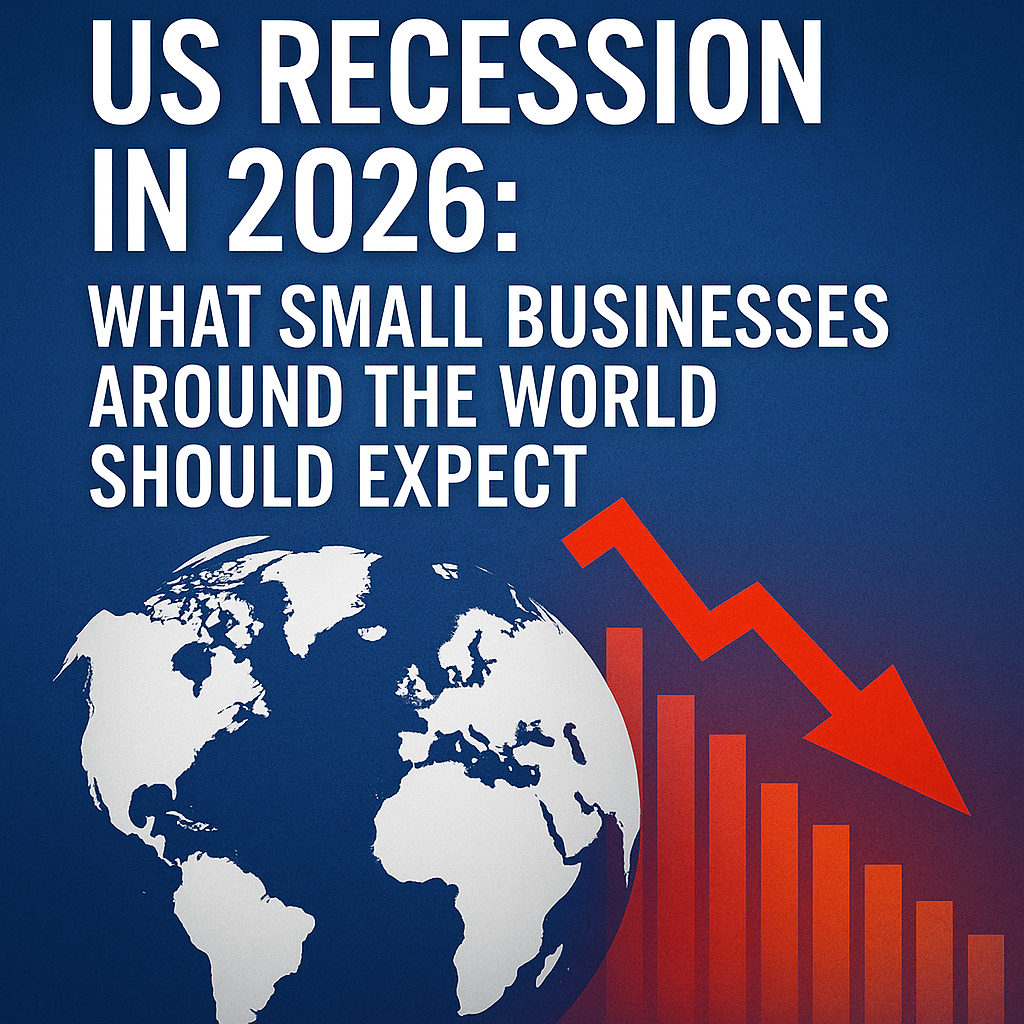US Recession in 2026: What Small Businesses Around the World Should Expect

Economists warn of a possible U.S. recession in 2026. Here’s how a downturn could ripple through global markets and affect small businesses, from exports to financing.
A Global Shock in the Making
The U.S. economy may tip into recession in 2026, according to multiple forecasts, raising alarm far beyond American borders. Analysts from Deloitte project U.S. GDP could shrink by nearly 2%, while EY expects unemployment to climb toward 5%. The Conference Board has also warned that tariffs and trade tensions may deepen the slowdown.
For small businesses across the globe, the message is clear: prepare now.
How the Recession Spills Over
When the U.S. economy slows, the effects rarely stay at home. A downturn would likely hit small firms worldwide through three main channels:
- Falling demand: U.S. imports drop, cutting orders for exporters in Asia, Europe, and beyond.
- Tighter credit: Banks scale back lending, leaving small firms struggling for working capital.
- Currency swings: A stronger dollar raises costs for importers and firms with dollar-denominated debt.
Why Small Businesses Feel It More
Large corporations often have reserves and global reach. Small firms, by contrast, run lean and depend heavily on local markets. Limited cash buffers, weaker access to loans, and thinner bargaining power make them especially vulnerable.
Studies show small businesses face higher closure rates during recessions, particularly in sectors like retail, food service, and hospitality.
Global Hotspots for Risk
- Export-driven manufacturers: Shrinking U.S. orders could hurt textile producers in Asia, furniture makers in Eastern Europe, and component suppliers worldwide.
- Import-dependent retailers: Currency depreciation would raise costs for small shops and wholesalers sourcing in dollars.
- Debt-heavy startups: A stronger dollar could make refinancing difficult, especially in emerging markets.
- Local U.S. small firms: Restaurants, travel services, and retail may feel the first blow as household spending weakens.
Strategies for Survival
Despite the risks, small businesses can take steps to protect themselves:
- Diversify customer bases beyond the U.S. market.
- Strengthen liquidity by accelerating receivables and cutting nonessential costs.
- Embrace digital tools to expand e-commerce and reduce overhead.
- Explore alternative financing, including peer-to-peer lending and government programs.
- Build loyalty with core customers through flexible terms and value-added services.
Policy Support Could Make the Difference
Governments and development agencies may need to step in with loan guarantees, tax relief, and digital infrastructure investments. Without intervention, the weakest firms risk being forced out of the market.
The Bottom Line
A U.S. recession in 2026 would send shockwaves across the global economy, and small businesses are likely to feel the brunt of it. Yet downturns also create opportunities: firms that prepare early, adapt quickly, and invest in resilience may emerge leaner and more competitive when the recovery comes.


